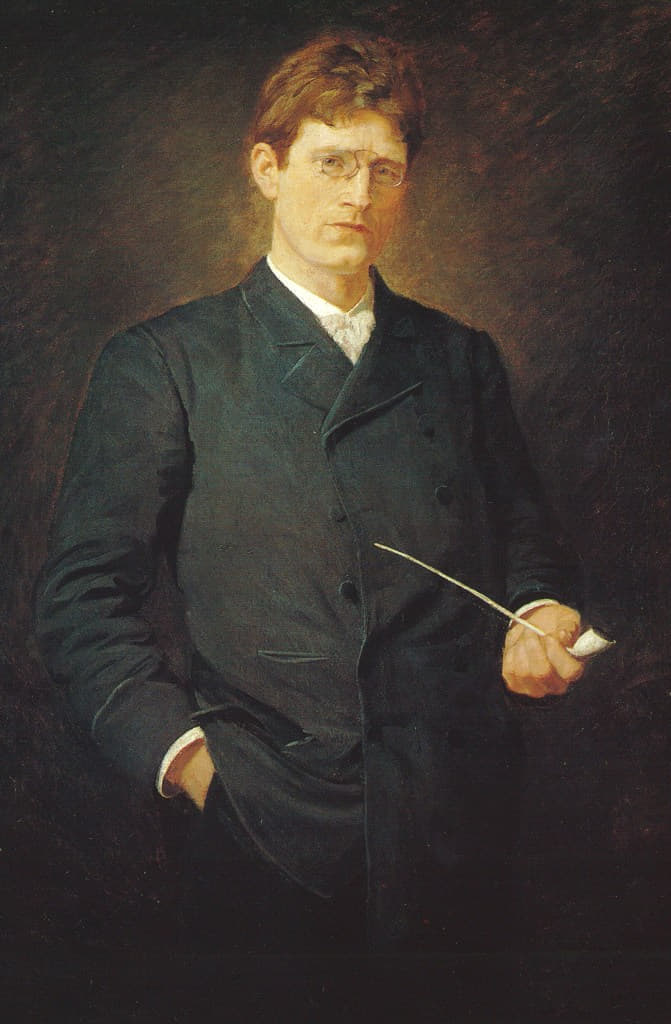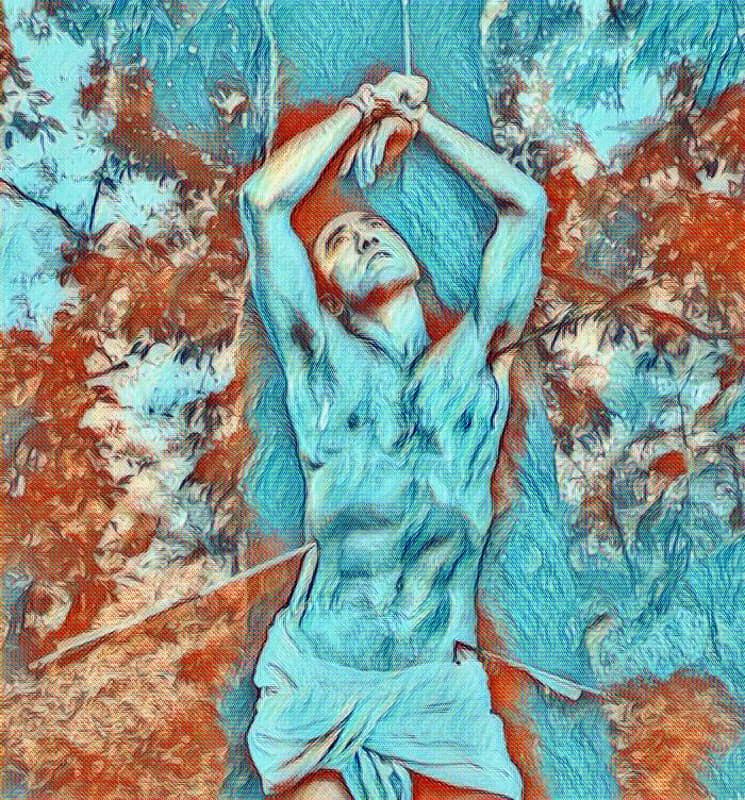Knut Hamsun was an adventurer, who has travelled through styles, genres and eras. A Norwegian genius, who is now largely unknown and forgotten, has left the literary world a work as dense as a northern forest, alternately obscure and enchanting. As a modern storyteller, he tried to escape the shackles of the literature of his time, working on both the psychology of his characters and language like a goldsmith.
If the Scandinavian writer Martin Nag describes Knut Hamsun as the “Norwegian Dostoyevsky,” it is undoubtedly because Hamsun was very much influenced by the realism of the author of The Possessed (to be clear, Russian realism is not that of the French tradition), even if his literary career took him much further. It was through an article published in 1890 in the magazine Samtiden, entitled “On the Unconscious Life of the Soul” that Knut Hamsun revealed his literary project. In this theoretical counterpart to his major novel, Hunger (1890), Hamsun showed the connection he sought to make, at least in an unconscious way, between Nietzsche’s individualism (although he neither read nor met him) and Franz Kafka’s modernity. Hamsun was impregnated by Nietzschean philosophy, thanks to the influence of Georg Brandes, who from 1888 onwards, gave a series of lectures, in Scandinavia, on the author of the Gay Science, a mindset that can be found in “Dark Sky,” the last chapter of the last book that Hamsun devoted to his trip to America. Blithely mocking his predecessors, especially Guy de Maupassant, he explored the depths of the human soul, starting with his own. This is how Hunger takes the form of a quasi-autobiographical novel. Knut Hamsun made the main character, an anonymous, modern urban, faceless, without roots, proof of his desire to break with the old codes of realism and naturalism of the declining nineteenth century—naturalism, which was more concerned with describing places, characters and objects in detail, with the aim of faithfully re-transcribing “nature.”
Knut Hamsun and the Modernity of Language
Much more than a social novel dealing with the misery and wandering of a man in a European capital that is totally unknown to him, Hunger is a psychological novel that puts its narrator in front of an alter-ego, an ambiguous companion, whom he maintains in order to cultivate the inspiration necessary for his literary work: “I had noticed very clearly that if I fasted for a long enough period, it was as if my brain was flowing very slowly from my head and leaving it empty.” This character runs through the novel, balanced between moments of genius and brilliance, between physical and mental torture. He writes thus: “God had stuck his finger in the network of my nerves and discreetly, by that way, had tangled up the threads a bit.” This ambivalent character allows Hamsun to evoke his own neuroses and to announce another objective of his life: the aesthetics of language. He never stopped working at it; sometimes with fever.
Kristofer Janson, a poet and priest who knew Hamsun, said that he knew “no one as sickly obsessed with verbal aesthetics as he was… He could jump for joy and gorge himself all day on the originality of a descriptive adjective he read in a book or found himself.” In Hunger, the character has an unpredictable and tumultuous relationship with writing: “It was as if a vein had burst in me, words follow one another, organized themselves into sets, constituted situations; scenes accumulated, actions and lines piled up in my brain and I was seized with a wonderful well-being. I write like a man possessed. I fill page after page without a moment’s respite… It keeps bursting into me. I am full of my subject and each word I write is like a dictation.”
His first novel thus inaugurated a work on the aesthetics of language. Previously, Hamsun spoke a Norwegian still “bastard,” peasant, and quite far from the bourgeois Norwegian of the capital. This is probably what he had in mind when he wrote in an article in 1888: “Language must cover all the ranges of music. The poet must always, in all situations, find the word that vibrates, that speaks to me, that can wound my soul to the point of sobbing by its precision. The word can metamorphose into color, into sound, into smell; it is up to the artist to use it to hit the nail on the head… You have to roll around in the words, to revel in them; you have to know the direct but also secret force of the Word… There are high and low resonance strings, and there are harmonics.”
Hamsun’s writing is therefore unquestionably psychological and introspective. The hunger of the hero serves to exacerbate the deepest traits of his personality. Similarly, in Pan, Hamsun delivers the character of the captain in exile, to better confront his thoughts with the wilderness: “I am sitting in the mountain and the sea and the air are whispering, which bubble and groan horribly in my ears because of the weather and the wind… The sea rises in the air, foaming and staggering, staggering; it is as if populated by great furious figures that spread their limbs and bawl at each other. No, it is a feast among ten thousand hissing demons that sink their heads into their shoulders and circle, whipping the sea into foam with the tips of their wings. Far, far away…”
We can also notice the influence of Dostoyevsky’s Notes from the Underground on the novel Mysteries and more particularly on the character of Nagel, a man who has a taste for contradiction, and who nourishes an irrepressible need for escape. Nagel shocks by his habits, by his behavior, by his attire. Indeed, if Hamsun’s stories are full of details about the clothes of the protagonists, we know almost nothing about their physical portrait. Thus, the character of Hunger attaches particular importance to his vest, which he leaves “in the hock” to be able to get some money; but his name is never mentioned. And Nagel is always dressed in a suit and a hat. Hamsun’s characters are thus reduced to a silhouette, flat areas of neo-impressionist colors that reveal only their most intimate and sometimes most brutal psychology, like Thomas Glahn in Pan, who kills his dog without apparent motive.
Knut Hamsun, the Man of Tradition
If Knut Hamsun’s characters are modern in their resolutely introspective treatment, they evolve in a surprisingly traditional setting. Indeed, Knut Hamsun, raised in the Protestant tradition by his uncle, and drawing from his mother a deep attachment to his country, fed his stories with a telluric and almost carnal energy.
Hamsun reveals himself in a less obvious way as a man of tradition, in many ways a “pagan who adores Christ,” to quote Nicolás Gómez Dávila. One thinks of the setting of his novels, such as Pan, in which he shows his attachment to the nature of the North, or Markens grode (The Fruits of the Earth, or Growth of the Soil), a rewriting of Genesis. Very critical of bourgeois materialism, Hamsun maintained throughout his life a close relationship with spirituality, which occupies an important place in his books. Thus, in Victoria (1898), he writes in praise of the Gospels: “Love was the first word of God and the first thought that crossed his mind. When he commanded ‘Let there be light,’ love was. All his creation was successful and he did not want to change anything. And love, which had been at the origin of the world, was also its master. But its paths are strewn with flowers and blood. Of flowers and blood.”
Hamsun’s detestation of the bourgeois world is also apparent in a 1917 work entitled, Segelfoss By (Segelfoss Town). In it, Hamsun evokes a city “as if resurrected from the dead,” where people live in “small and old-fashioned” conditions, which is “as it used to be, a long time ago.” This neighboring city is symbolically outside of space and time. However, there is no nostalgia in Hamsun, who is aware of the changes and ruptures of time. Enemy of the modern world and major player in the Norwegian literary revival, his fate is similar to that of Ezra Pound in the United States or Louis-Ferdinand Céline in France.
Antoine Pizaine is a historian, monarchist and Maurrassian. This article appears through the kind courtesy of PHILITT.
Featured: “Portrait of the Author Knut Hamsun,” by Alfredo Andersen; painted in 1891.

